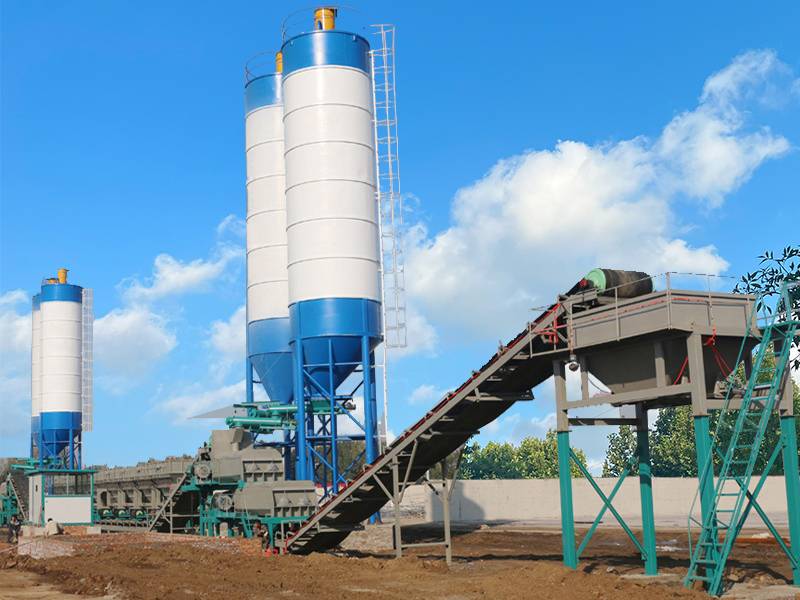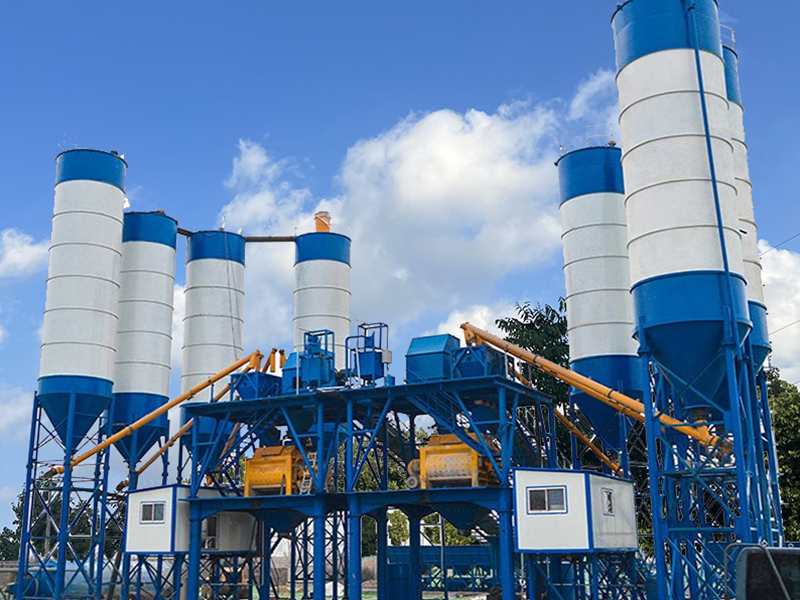The Difference Between Concrete Mixing Plant And Stabilized Soil Mixing Station
Stabilized soil mixing plants and concrete mixing plants are generally provided by manufacturers specializing in construction machinery. However, many customers may still have questions about these two types of equipment and what specifically distinguishes them. Concrete and stabilized soil are two different engineering and building materials with distinct applications. Stabilized soil is commonly used as a roadbed or foundation, especially in highway construction. Concrete, on the other hand, is a binder widely used in various engineering and construction projects. Therefore, although concrete is sometimes used in road construction, the equipment utilized is different: one is a stabilized soil mixer, and the other is a compulsory mixer. What are the differences between these two pieces of equipment?


I. Product Definitions
1. Concrete Mixing Plant
Also known as a concrete batching plant, a concrete mixing plant is equipped with a JS compulsory double-shaft concrete mixer as its main machine. The mixer has different weighing capacities, and the batching machine is a PLD concrete batching machine. The entire set of equipment includes a double-shaft mixer, batching machine, cement silo, screw conveyor, conveyor belt, and control room. It can produce various types of concrete, such as plastic and dry-hard concrete, with high production efficiency and short mixing time. It features an aesthetic appearance and is used in large and medium-sized construction projects, road and bridge projects, and prefabricated concrete product factories. It is the equipment for producing ready-mixed concrete.
2. Stabilized Soil Mixing Plant
A stabilized soil mixing plant (or mixing station) is a modular and dismantlable mixing equipment. Its main machine adopts a double-shaft continuous mixer without lining plates, facilitating easy maintenance and ensuring uniform mixing with high production efficiency. The batching adopts electronic weighing or volumetric metering, providing stable measurement and quick ratio changes. The aggregate bins adopt a building block or modular combination, offering flexibility and the ability to mix gravel stabilized soil and lime stabilized soil. It is suitable for the construction of base materials for highways, urban roads, airports, and sports fields. It can use raw materials such as quicklime, hydrated lime, soil, sand and gravel, fly ash, and cement to produce base materials like lime soil.
II. Usage Occasions and Finished Product Requirements
Concrete Mixing Plant: The concrete products produced are mainly used in the construction of various engineering structures, such as water conservancy, electric power, and bridge projects. These products usually have higher quality requirements to meet the structural strength and durability of buildings.
Stabilized Soil Mixing Plant: The concrete products produced are mainly used for the reinforcement and improvement of roadbeds in transportation engineering projects such as highways, railways, airports, pavements, squares, and parking lots. These products stabilize the soil and enhance engineering performance in transportation projects.
III. Mixing Main Machines
Concrete Mixing Plant: Mainly uses JS double-shaft compulsory mixers or vertical-axis planetary mixers, providing uniform mixing with good mixing effects.
Stabilized Soil Mixing Plant: Uses a double-shaft continuous mixer without lining plates.
IV. Cement Usage and Storage Method
Concrete Mixing Plant: Depending on the model, it generally uses three to four cement silos, with capacities ranging from 100 tons to 300 tons being commonly used.
Stabilized Soil Mixing Plant: Since the cement proportion required for stabilized soil production is relatively low, the number of cement tanks in the stabilized soil mixing plant equipment is small, often only 1-2, with smaller models around 100 tons.
V. Measurement Methods
Concrete Mixing Plant: Usually adopts static measurement methods to ensure accuracy and stability during production.
Stabilized Soil Mixing Plant: Often adopts dynamic measurement methods to meet the special needs of stabilized soil production.
VI. Equipment Models and Prices
Concrete Mixing Plant: Models include the HZS series, mainly HZS25, HZS35, HZS50, HZS60, HZS75, HZS90, HZS120, HZS180, HZS240, or dual-mixer concrete mixing plants or mobile concrete mixing plants. Due to their complex configuration and diverse functions, concrete mixing plants usually have higher prices.
Stabilized Soil Mixing Plant: Common models include WBZ300, WBZ400, WBZ500, WBZ600, WBZ700, and WBZ800. Due to their relatively simple structure and single function, they usually have lower prices.
VII. Operation Modes
Concrete Mixing Plant: Usually operates intermittently, with weighed aggregates and accurate mixture ratios. The products produced have higher requirements than those from a stabilized soil mixing plant.
Stabilized Soil Mixing Plant: Operates continuously using dynamic measurement methods for production, with less strict requirements on mixture ratios, mainly used for stabilized soil layers.
VIII. Production Processes
Concrete Mixing Plant: Requires basic processes such as material batching, mixing, conveying, and stirring.
Stabilized Soil Mixing Plant: Requires processes such as material pretreatment, drying, mixing, water addition, and blending.
IX. Different Materials
Concrete Mixing Plant: Mainly used for producing concrete with mixed materials such as cement, aggregates, sand, and water.
Stabilized Soil Mixing Plant: Mainly used for producing stabilized soil with mixed materials such as cement, ash, lime, sand, and soil.
X. Production Efficiency and Flexibility
Concrete Mixing Plant: Usually has high production efficiency and can adapt to various complex construction environments and requirements. Additionally, with technological advancements, concrete mixing plants have achieved a high level of automation and intelligent control, improving production efficiency and construction quality.
Stabilized Soil Mixing Plant: Although its production efficiency may be slightly lower than that of a concrete mixing plant, it has higher flexibility, adapting to different types of stabilized soil production needs. Meanwhile, stabilized soil mixing plants also have a high level of automated control, ensuring the stability and accuracy of the production process.
Tips for Choosing Suitable Equipment
When selecting suitable equipment, consider the following aspects:
- Production Needs: Choose the equipment based on your production needs. For concrete production, select a concrete mixing plant; for stabilized soil production, choose a stabilized soil mixing plant.
- Equipment Performance: Consider the equipment's performance, production efficiency, stability, and other factors to meet your production needs.
- Price: Consider the price and choose suitable equipment within your budget.
- After-Sales Service: Consider the manufacturer's after-sales service, including equipment warranty, maintenance, upgrades, etc., to ensure the normal operation and extend the equipment's lifespan.
Both concrete mixing plants and stabilized soil mixing plants primarily use sand and stone as raw materials and require cement silos for cement storage. Although their working principles are basically the same, involving mixing various materials, there are significant differences between them. When purchasing equipment, users must select suitable equipment based on their actual situations and avoid making the wrong choice.











